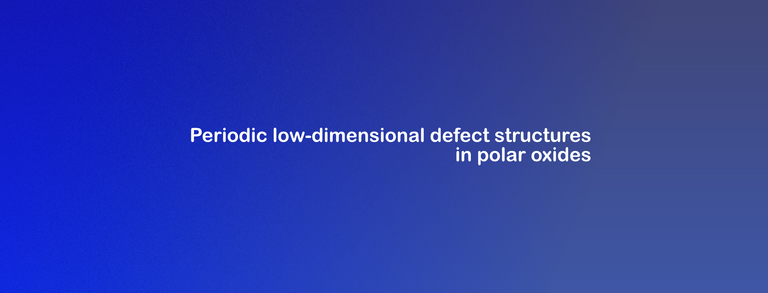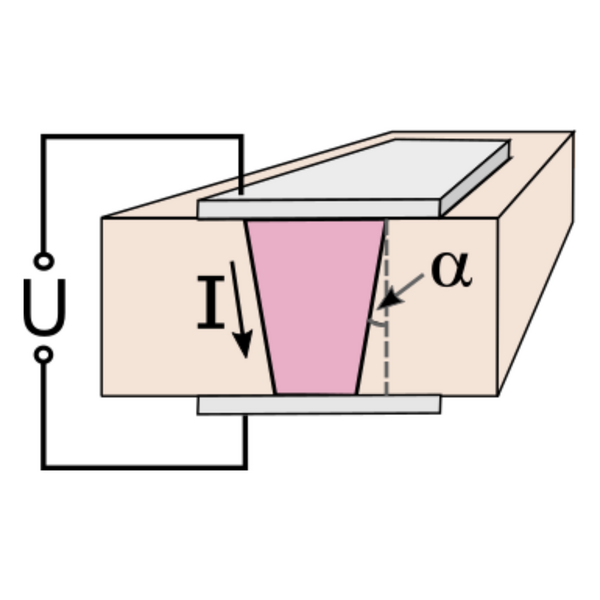Teilprojekt 6
TP6
Domain Walls in LNT Mixed Crystals
This subroject is a part of the research group FOR-5044 “Periodic low-dimensional defect structures in polar oxides”, that dedicates its activities towards correlating defect structure, electron and ion transport, as well as electromechanical properties in the model system lithium niobate-lithium tantalate (LiNb1-xTaxO3, LNT). The present subproject specifically focuses on domain walls in these polar LNT (mixed) crystals, that are present in every ferroic system due to energy minimization. The thermodynamic equilibrium naturally depends on a manifold of parameters, including size, dimensionality, chemical composition, and others more. The targeted chemical doping of the LNT systems (i.e with MgO, Hf, Fe) will vary this balance, and lead to a broad variety of domain and domain wall distributions that we will explore here both electronically and optically. Notably, we expect to discover domain walls in these LNT systems with unprecedented and novel properties, as are tunable domain wall conductivities, variable optical refractive indices, or ferroelectric topologies.
Firstly, we will explore the dielectric and electronic properties of domains and domain walls by applying macroscopic hysteresis measurements that allow deducing their integral responses, such as their coercive fields, the spontaneous polarization, and the leakage currents across various LNT mixed crystals. A major focus, however, lies on the domain wall electronic properties, in quantifying their AC and DC transport characteristics at both ultra-high and ultra-low temperatures. Hall-transport measurements in a variable magnetic field will allow to establish the charge carriers type and densities, as well as their mobilities within a single domain wall. Complementary, we will apply a novel AC transport technique to domain walls that provides direct access to the defect characteristics in these 2-dimensional transport channels through higher harmonic analysis.
Secondly, a set of dedicated, non-invasive optical methods will complement the above electronic investigations of the LNT mixed crystals. Applying µ-Raman-spectroscopy, Second-Harmonic-Microscopy/Polarimetry and Fluorescence microscopy analysis to domains and domain walls, will allow quantifying their chemical, structural and dielectric properties. Specifically at domain walls, we expect the local electric fields, and hence the local tensor properties to vary dramatically, which can be taken as a direct fingerprint of locally non-trivial topologies.

